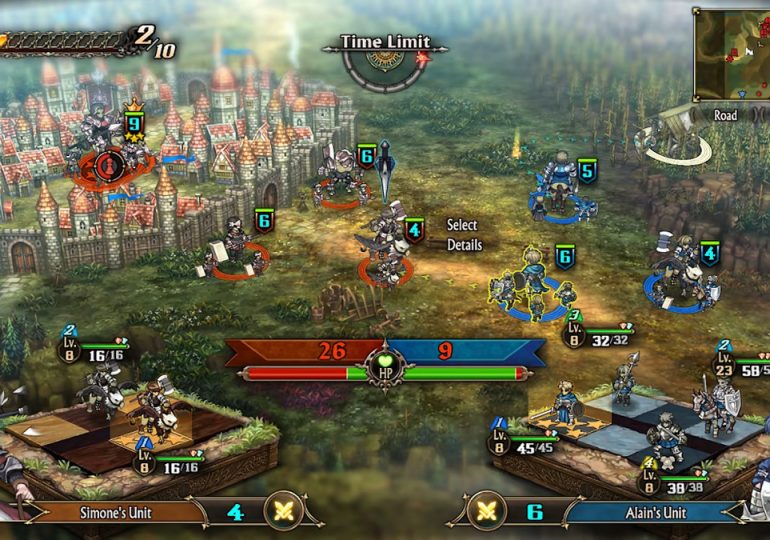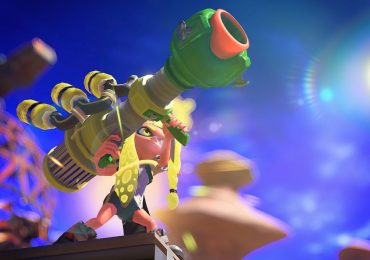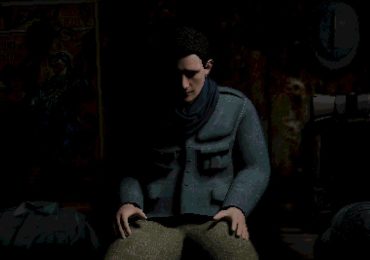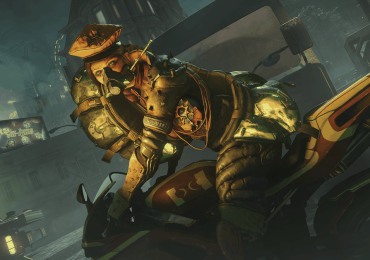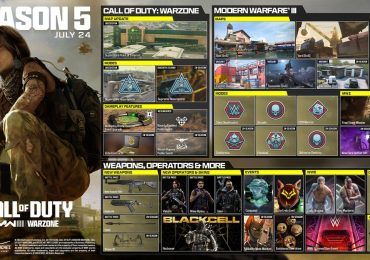It’s hard to write a review of Unicorn Overlord: the game is big, and after over 30 hours I’ve covered little more than half its map, traversing grasslands, desert, winding mountain paths, and a magical forest on my prince’s conquest to liberate the fantasy land of Fevrith and reclaim his throne. It’s hard because a lot of the games I’ve seen people compare Unicorn Overlord to — Tactics Ogre, Final Fantasy Tactics — were released before I was born. I was worried about not getting it, not connecting with the supposed fun of spending hours in menus when the tactics games I played most growing up with a DS found their wider appeal through other systems, like romance. And it’s hard for me to write a review of Unicorn Overlord because I’d have to stop playing it long enough to write.
Unicorn Overlord’s map of Fevrith is an open world of five kingdoms that sprites explore from overhead. The presentation is similar to Square Enix’s use of HD-2D but with more painterly environmental art. It’s here that Unicorn Overlord makes its strongest break from convention, foregoing a traditional level-based structure. When battles happen, they happen on this map at this scale, just with shadowy borders boxing in the area and new UI elements. When battles begin, sprites are deployed at forts and towns; siege weaponry and barricades are laid; and forests, roads, rivers, and mountains all become part of the strategic puzzle.
Characters don’t fight alone, but in units. Each is composed of characters, whether unique to the story or customizable mercenaries-for-hire, on a 2×3 grid. When they collide, the scale shrinks from a sprite on the large map to the character within each unit to focus on tactical mechanics. Each character in a unit uses a mix of active and passive abilities unique to their class to deal damage, support allies, and debuff foes. With many, many variations on fantasy combat archetypes, from hoplite to witch to gryphon rider to elven archer to angelic knight, there’s no simple way to break down combat. Type advantages exist but unit composition makes for complications, like a hoplite defending a lancer from a gryphon knight. The placement of units on their grid can be even more important. There are basic strategies like keeping tankier classes in front, but some classes may exploit that with abilities designed to penetrate the back row.
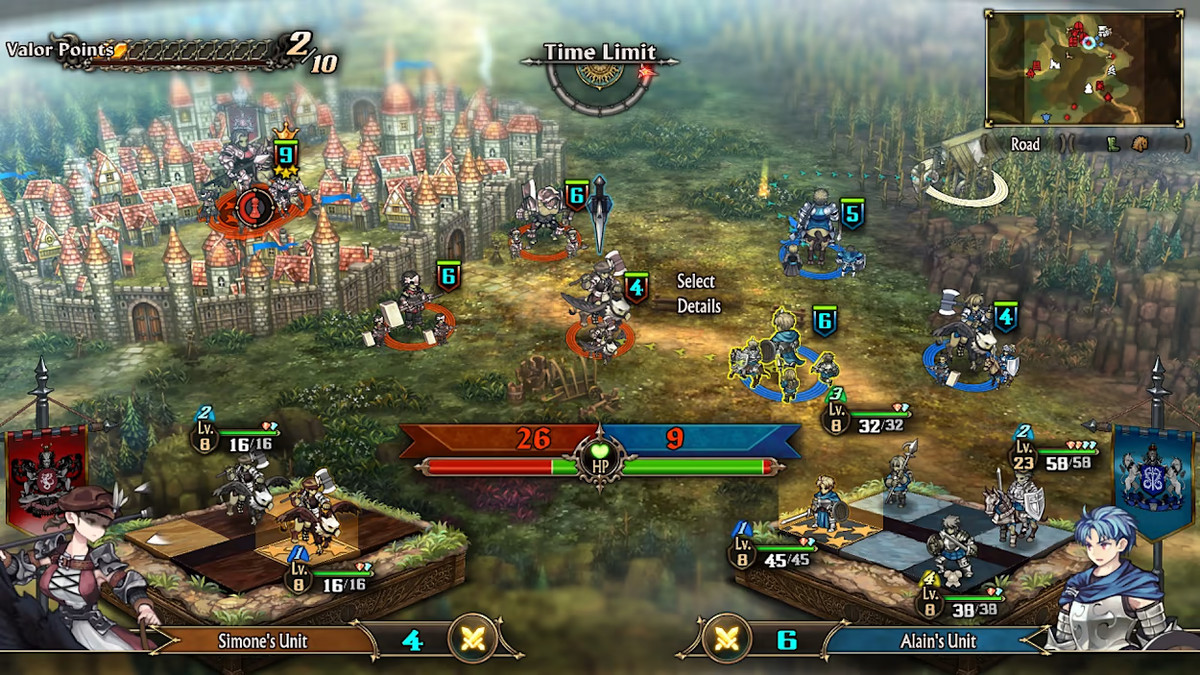
In menus, there’s equipment, as well as customizable “tactics” that let you establish priorities and use-cases for each character’s skills, allowing players to tailor move-sets to each unique unit combination. While the placement is ultimately left to the player and can change the tide of each battle, you can also just press a button in the menus to optimize equipment and tactics. And in a battle preview screen (à la Into The Breach), you can see the anticipated damage dealt and received from a battle and adjust the placement of units to affect the outcome. There’s also a whole “rapport” system, which boosts characters with a strong relationship gained by fighting together and sharing gifts or food in the tavern. Many characters have dialogue to unlock with one another along the way as well, very similar to Fire Emblem.
This large scale, combining strategy gameplay with a 2D RPG, gives the impression of moving armies and making progress on a campaign. As the game’s large, large cast of characters join from the regions and towns you fight for every inch of, these battles imbue the world with a sense of place and expansiveness. Instead of a home base like some castle or school to actually interact with characters, they’re found across the world you fight to reclaim, and they have homes and family there.
With exploratory quests, smaller skirmishes, side quests that unlock new characters, the rapport system, and progressing the main story, Unicorn Overlord is paced perhaps too well. I find myself jumping around to all its constituent parts, wasting a rainy Saturday playing the game in the Switch’s handheld mode on my partner’s couch: one more battle; just need to clear up these question marks on the map; well, all these new rapport conversations are available; let me just put all this new equipment on my army; well, I could go to the tavern while I’m by a castle.
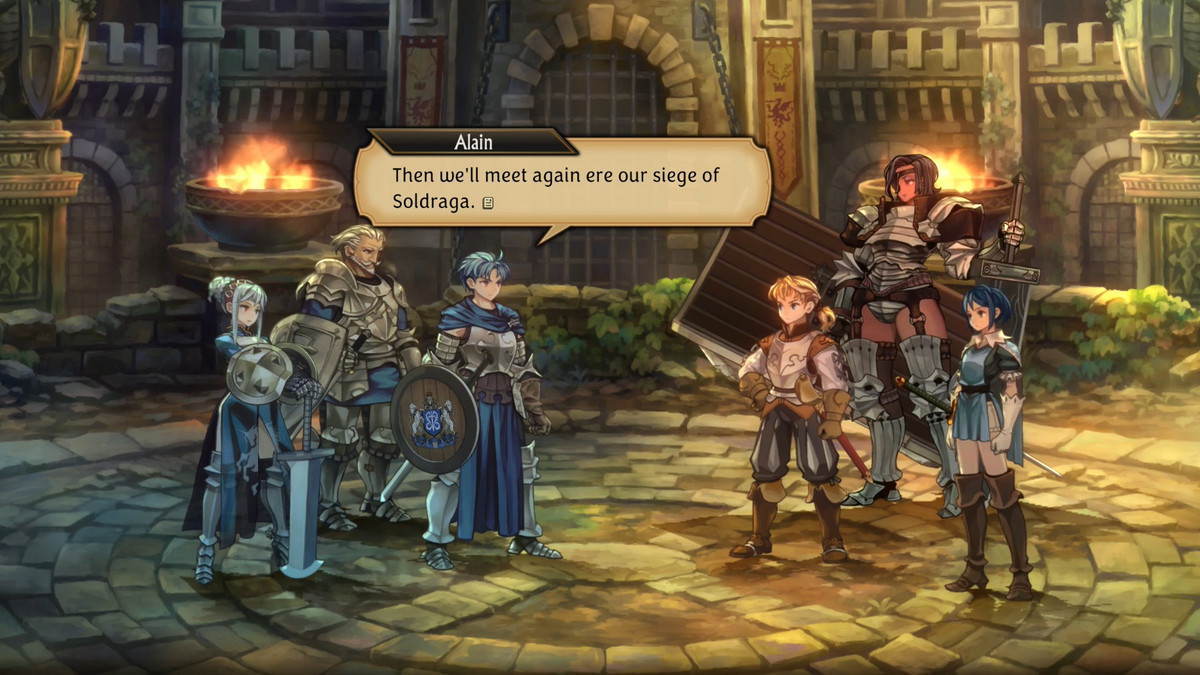
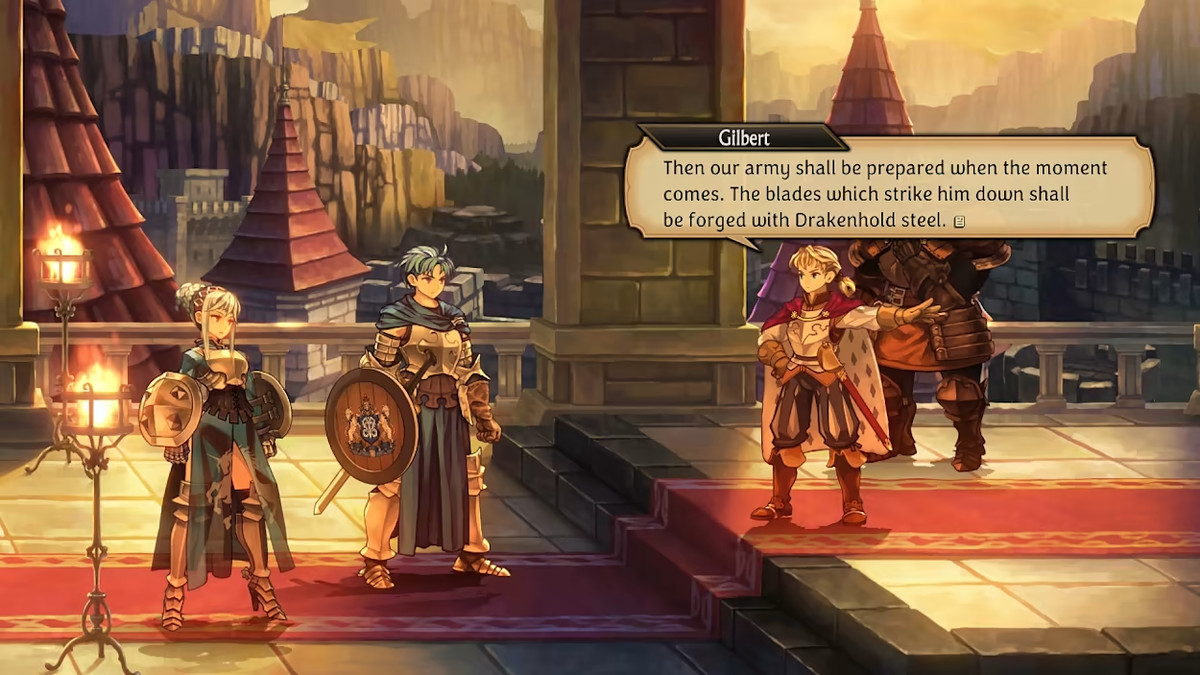
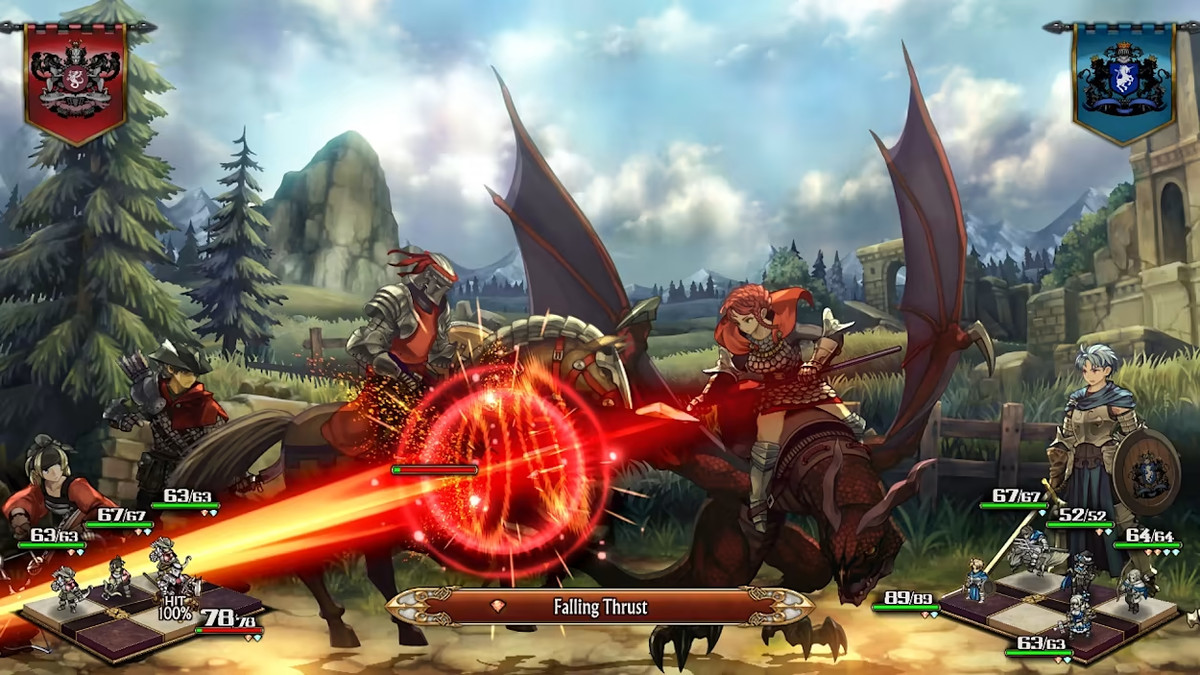
There’s a lot going on, but it doesn’t feel unwieldy. The game finds a careful balance in what details it gives you and what control it’s willing to optionally take away for simplicity’s sake. Playing on the normal difficulty, I’ve faced challenges but met them. I’ve even started fussing with the tactics sub-menus to fine-tune unit combos, something I never thought I’d want to do. It’s approachable to someone who doesn’t come to Fire Emblem or Valkyria Chronicles for challenging, punishing gameplay with childhood memories of tactical prowess.
When not in the over world or logistical menus, there’s the stage. These are sets rather than levels, places for combat and conversation. These stages are where Unicorn Overlord comes down to the human scale, with fights animated in real time so you can see how your tactics actually pan out. But these scenes show more than that: In Fevrith, wind blows through fields of grass and kicks up dust. Flames flicker, water wheels turn. Waves crash and boats rock as birds soar. In one battle a fairytale forest is transformed into a fiery furnace, and after my elven archers use magical rain to extinguish the flames, the battles are fought beneath lingering smoke in the ash and wood. Whether in battle or conversation, characters in these scenes are animated and voiced in lively ways. It brings drama to genre and investment to archetypes.
The big plot is a pretty generic fantasy story about a prince’s quest to liberate his kingdom, reclaim his throne, and unite the people of Fevrith through kindness and rebuilding efforts. I have some feelings about fighting for the monarchy to uphold the previous status quo, but a pretty, orphaned prince guided by his unwavering sense of noblesse oblige is what shojo is made of. While there are no headpats and rapport conversations aren’t a whole dating sim, Unicorn Overlord tries to stir similar emotions. Personality and emotion are carried behind inflection, tone, and humor as characters fight or converse, and beyond good performances and thoughtful translation, the voice direction of the dub cast is stellar. And as much care goes into animating, well, character into each character, with bespoke body and facial movements in battle and speech.
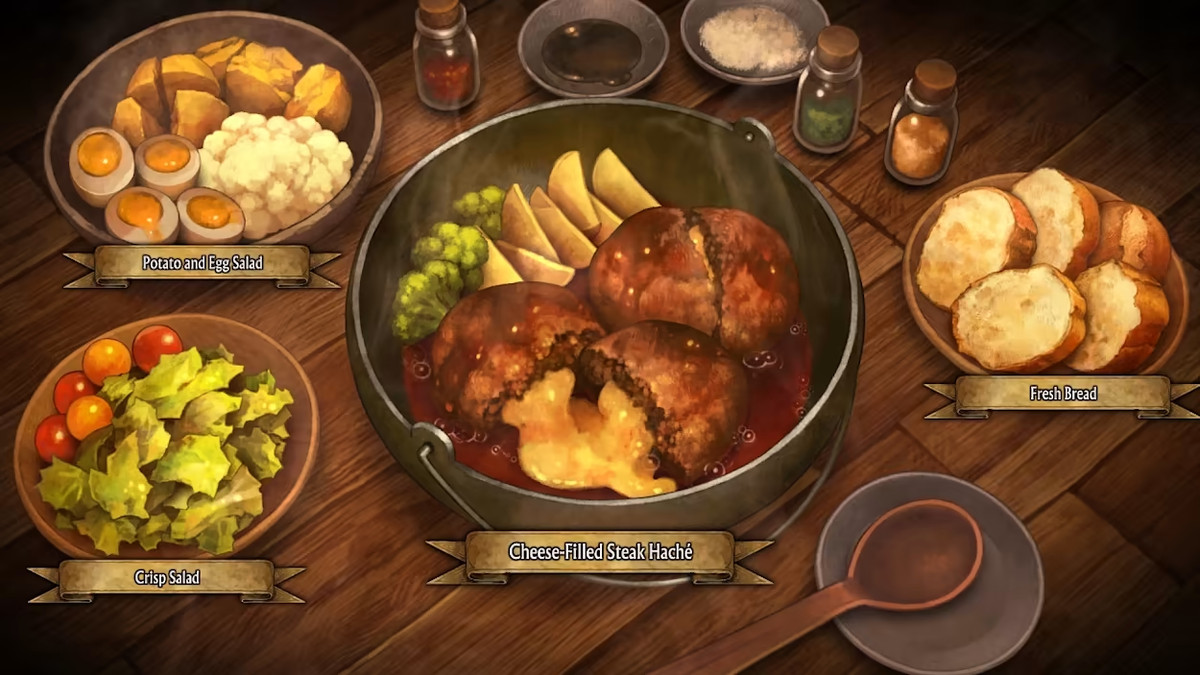
This even carries over into animated character portraits of unvoiced dialog boxes. There’s a craft to illustrated character portraits that does not lend itself well to 3D, but Vanillaware’s signature painterly art style works well with communicating even subtle expressions. There are so many little animations across the game’s UI and baroque elements in the victory and save screens. It’s impressive how the game does all this while not slowing down or drawing attention to itself. (Except the food. The food is just showing off.)
After my first 10 hours of Unicorn Overlord, I emerged from its tutorial area feeling excited and daunted by the world ahead of me. Things had built mechanically and narratively on top of each other, and I wanted more, but more can mean different things. Over the next 20 hours, nothing radically changed. It wasn’t more the way Vanillaware and Atlus’s last outing, 13 Sentinels, became. But what it did do was dole out new locales, units, and story threads that compelled gameplay and exploration forward. Each new area has required some reworking due to topographical constraints (like the narrow mountain passes of Drakenhold) or new units that completely reshuffle my army. Unicorn Overlord has managed to maintain itself for the past 20 hours, and there’s at least that much to go. It’s a different kind of growth, but one that fans of the early game will hear rung as praise. It should terrify them a little too.
Unicorn Overlord was released March 8 on Nintendo Switch, PlayStation 4, PlayStation 5, and Xbox Series X. The game was reviewed on Nintendo Switch using a pre-release download code provided by Vanillaware. Vox Media has affiliate partnerships. These do not influence editorial content, though Vox Media may earn commissions for products purchased via affiliate links. You can find additional information about Polygon’s ethics policy here.
